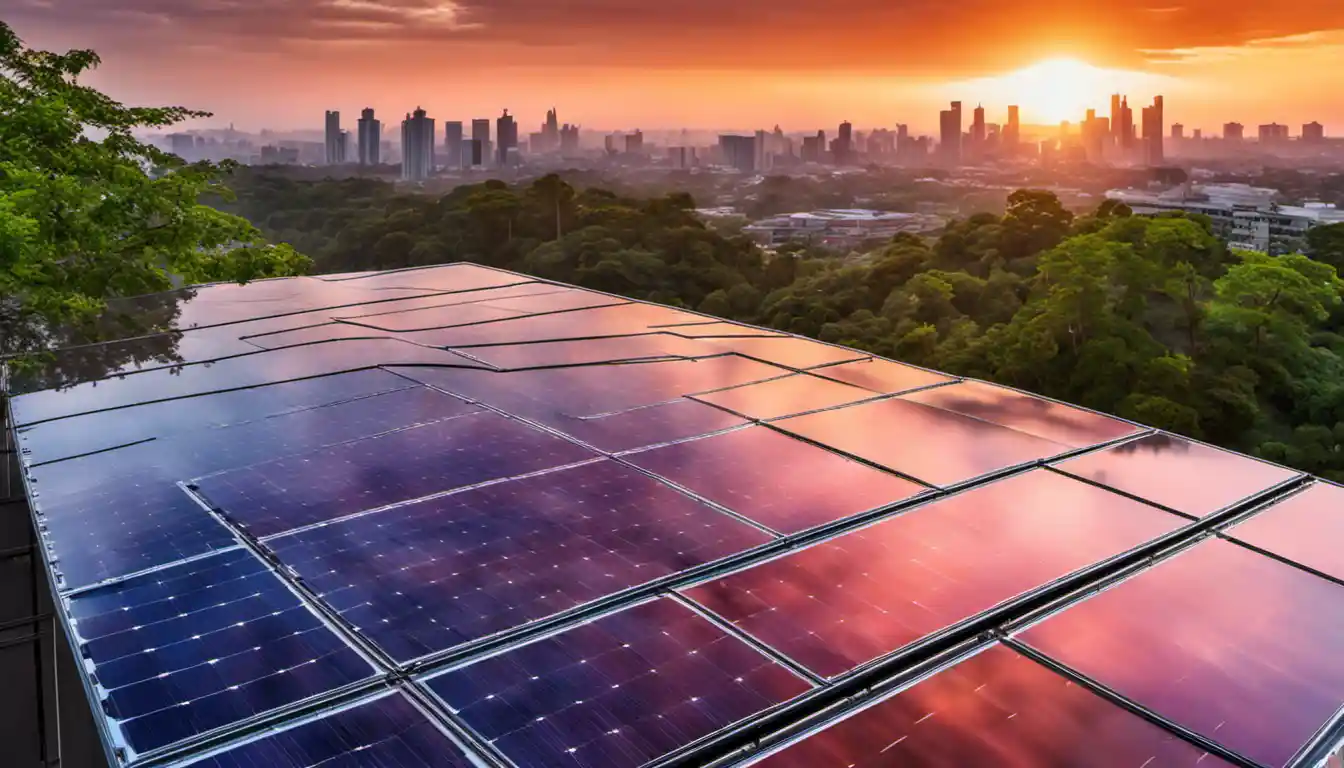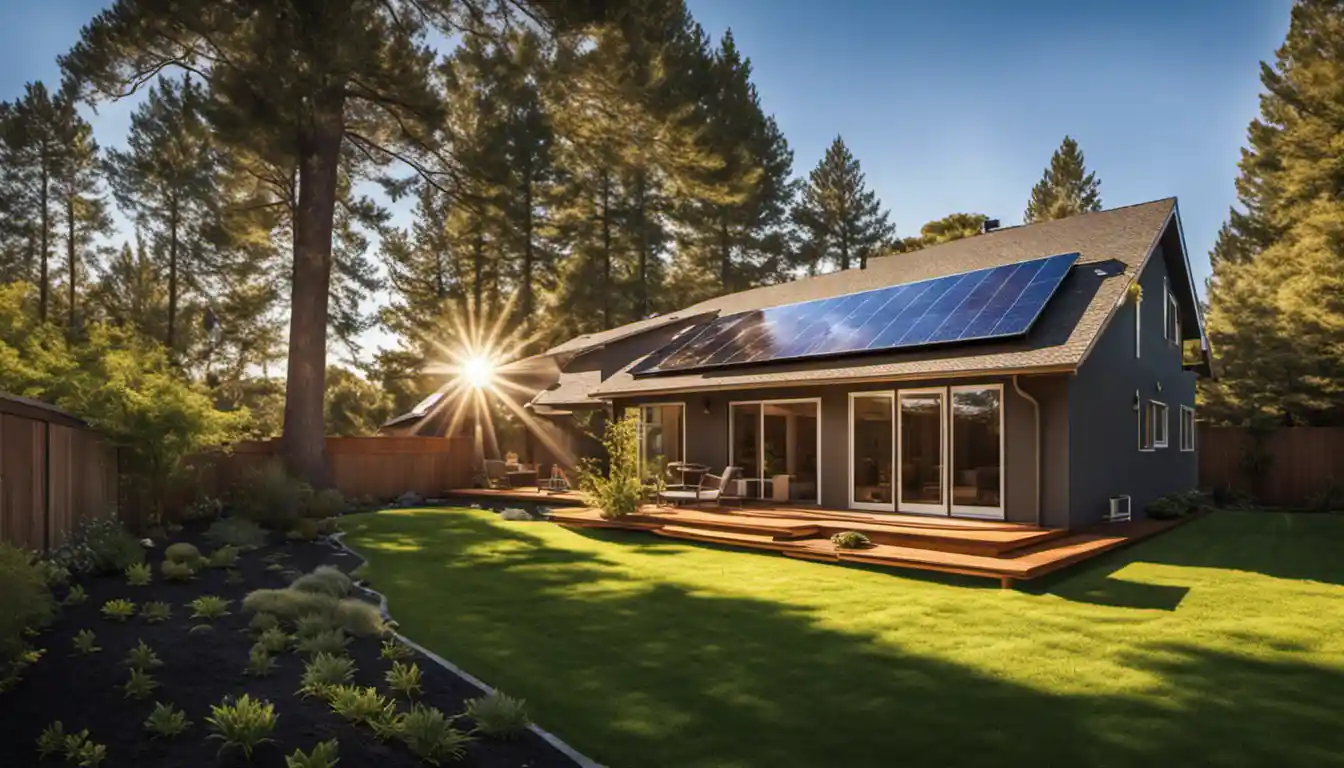Introduction
To make a solar cell, you will need to assemble a sandwich of two specific types of silicon: N-type, which has extra electrons, and P-type, which has extra positive charges. Put them together with conducting wires attached to positive and negative sides, then cover the cell to protect it from the environment. When sunlight hits your solar cell, it will generate an electric current.
The Basics of Solar Cells
Creating a solar cell and harnessing the power of the sun may seem like a complex process that belongs to the realm of professionals, but the reality is that with some passion, patience, and a little scientific know-how, basically anyone can learn how to make a solar cell from scratch. For the past 20 years, I’ve dedicated my career to mastering the solar energy field, and today I’m sharing that expertise with you.
Imagine holding a miniature power station in the palm of your hands. That’s the uniqueness of a solar cell – a small, square-shaped surface typically made of silicon and some metal, capable of providing a sustainable source of energy.
The Benefits of Making Your Own Solar Cell
Going the DIY route in creating your solar cell not only provides practical understanding and skills, it can also make solar power more accessible by bringing down costs, encouraging local enterprise, and fostering a sense of empowerment and accomplishment.
Understanding the Challenges and Limitations
While DIY solar cells offer many benefits, it’s also essential to understand the challenges and limitations of this project. The efficiency of homemade solar cells may not match that of commercially produced ones, and safety measures need to be taken since we are dealing with electricity. But with knowledge and caution, these hurdles are conquerable.
Essential Materials Needed for a Solar Cell
In order to make your own solar cell, you will need a collection of materials that you can source from basic electronic components stores or online.
Overview of Raw Materials
The primary material for your solar cell is silicon. It’s an abundant, non-toxic element that forms a great base for converting solar energy. Along with silicon, you’ll need other items like conducting wires, metal plates, soldering materials, boron, phosphorus, and some additional components depending on your specific cell design.
Sourcing Materials: From Titanium Dioxide to Copper Wire
It may seem daunting to find these materials, but most are readily available online. Copper wire, for example, is a popular component in many DIY solar cell guides because it’s easy and safe to use.
Curious about how to make a solar cell with copper wire? Keep reading!
Process of Making a Solar Cell from Scratch
The process of making a solar cell from scratch is a fascinating journey that combines art, science, and nature. It gives us a deeper appreciation of the sophisticated, yet elegant, technology that harnesses the power of the sun for our benefit.
Purifying the Silicon
Silicon is a key ingredient in your solar cell, and it needs to be purified before use. This step generally involves heating the silicon in a vessel at high temperatures until impurities are removed.
Creating Single Crystal Silicon
![]()
Silicon for solar cells needs to be single crystal, which means all the silicon atoms in the sample are perfectly aligned. This is achieved through a process called Czochralski process, which involves dipping a single crystal silicon ‘seed’ into molten silicon and slowly pulling it up and rotating it, creating the desired single crystal structure.
Making Silicon Wafers
In the making of a solar cell, the purified single-crystal silicon is then cut into thin circular wafers using a saw. These wafers form the foundation of your solar cell.
An Introduction to Doping Process
Doping involves adding a tiny amount of an element to the silicon to change its properties. Traditionally, boron and phosphorous are incorporated into the silicon to form the P/N junction necessary for a solar cell to function. This junction is critical in the creation of an electric field within the cell.
Guide to Crafting a Solar Cell with Copper Wire
Preparing Your Copper Wire
Curious about how to make a solar cell with copper wire? Begin by cleaning your copper wire thoroughly. It’s crucial that the wire is free of any oil, dust, or rust.
Integrating the Copper Wire into Your Solar Cell
The copper wire forms the basis of your external circuit, and the ends of the wire connect to your positive and negative terminals. The size and positioning of your copper wire will directly affect the effectiveness of energy transfer.
Assembling the Solar Cell
Placing Electrical Contacts on the Cell
The front and back electrical contacts are crucial for the cell to function. The back contact should cover the entire rear surface, while the front contact should form a grid-like pattern on the front surface of the cell to maximize sunlight absorption.
Applying the Anti-Reflective Coating
Apply an anti-reflective coating to the front of your solar cell. This coating will help increase efficiency by decreasing the amount of light that is reflected off the cell’s surface, ensuring more light gets absorbed.
Encapsulating the Cell
Encapsulation involves sealing the solar cell with a protective layer to ensure the longevity and safety of the device.
Generating Current from Your Solar Cell

Understanding the Basics of Solar Power Generation
When sunlight hits the silicon cell, it excites the electrons, causing them to move. The strategic positioning of the P/N junction then causes these electrons to move in a specific direction, creating an electric current.
Converting Solar Energy into Electricity
The electricity generated from your solar cell can be used directly, stored in a battery, or fed into an electricity grid. It’s a simple and sustainable way to provide energy to your home.
Quality Control for Your Home-made Solar Cell
Importance of Quality in DIY Solar Cells
Quality control is essential when building your solar cell. Do frequent checks during your build process to assure all components are correctly implemented, and don’t compromise on the quality of your materials.
Testing and Refining Your Solar Cell
Once completed, carefully test your solar cell in a controlled environment before implementing it in your home energy system. Note any irregularities and make all necessary refinements before extensive use.
Maintenance and Longevity of Your Solar Cell
Best Practices for Solar Cell Upkeep
Maintenance can include regular cleaning, checking for any physical damage, and ensuring the electrical connections are safe and secure. Proper maintenance ensures a longer lifespan for your homemade solar cell.
Troubleshooting Common Issues
Common issues that may arise can include reduced efficiency, physical damage, or electrical issues. None of these should be cause for alarm, as most are fixable with some basic troubleshooting skills.
Evaluating the Pros and Cons of DIY Solar Cells

The Benefits of Crafting Your Own Solar Cells
Creating your own solar cells is an empowering and educational experience. It’s a great way to reduce your carbon footprint, save on energy bills, and increase your understanding of renewable energy technologies.
Potential Drawbacks to Be Aware Of
While there are many benefits, the drawbacks should not be overlooked. These can include less efficiency than commercial cells, the need for maintenance, and time investment.
Frequently Asked Questions
Are DIY Solar Cells Cost-Effective?
DIY solar panels can indeed prove to lower costs in terms of energy bills over the long term. With the right tools and equipment, it can serve as an efficient way to bring solar energy to your home without the high upfront cost.
Is Technical Expertise Required to Make Solar Cells?
While having some scientific background can certainly be beneficial, even beginners can get started with the right resources and a willingness to learn.
Approximate Costs for DIY Solar Cells?
The cost would depend on the size of the solar cell and where the materials are sourced, but you can estimate just a fraction of the cost of a commercial solar panel.
Conclusion
Embracing Solar Power Independence
Making your own solar cell may seem like a daunting task, but with thorough preparation and understanding, anyone can enjoy the benefits of solar power. Solar power provides an excellent opportunity to understand the science behind solar energy, experience firsthand the process of creating a device that captures sunlight and converting it into usable electricity, and ultimately leads us towards energy independence and a cleaner planet.
Next Steps After Your First DIY Solar Cell
I encourage you not to stop here, continue exploring and experimenting with solar power. If you’re interested in knowing more about the industrial process of solar panel manufacturing, head on to our webpage on “/solar-panel-manufacturing” to get an insight into how the big league operates. Until then, keep shining, and stay solar!




50 thoughts on “How to Make a Solar Cell: A Step-by-Step Guide for DIY Solar Power”
Comments are closed.